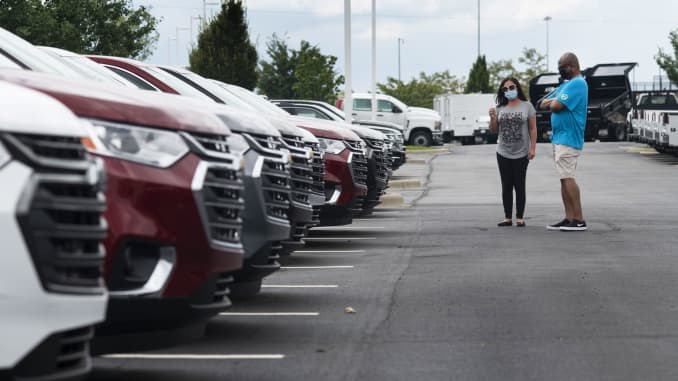After a year of political division, the spread of a virus worldwide, and a vaccine program that’s off to a slow start, January 2021’s auto sales forecast is rosier than one might expect. J.D. Power’s U.S. Automotive Forecast projects that the first month of sales this year will be an increase of 1.8 % over January 2020.
For anyone keeping track, that’s comparing this January’s mid-pandemic sales to a pre-pandemic month and forecasting an increase in retail sales volume. When adjusted for selling days – this January has one less – the sales increase rises to 6.1%.
Although retail sales are off to a blistering start, putting 2020 in the rearview, non-retail transactions like fleet sales continue to be suppressed. When non-retail is factored into the month’s forecasts, it represents a small decrease in adjusted year-over-year sales of 0.9%, or 4.9% down when the sales days aren’t adjusted.
Thomas King is the president of the data and analytics division at J.D. Power. In the Jan 27th press release, he states, “January continues the strong performance observed in Q4 of 2020 and points to a positive outlook for the balance of 2021. The growth in retail sales is encouraging, especially as it is being achieved with higher transaction prices and lower incentive levels. While retail demand remains strong, non-retail sales are still recovering, which is hampering total vehicle sales and SAAR.”
Optimism tempered by potential vaccine, inventory challenges
The forecasts for 2021’s retail sales are being discussed with a close eye on the horizon. One of the main threats to the auto industry’s return to normalcy is how quickly the COVID-19 vaccine is rolled out and America can get back to business. Bloomberg’s COVID-19 Tracker shows that 24.5 million vaccine doses have been administered in the US as of Jan 26, falling short of the projections the federal government had previously made. Part of the pandemic problem is an unknown: how effective will the vaccines be against emerging strains of the virus that appear to be more contagious and potentially more severe?
The US may not be as “locked down” as their neighbors to the north, but resuming normal, full-capacity economic activity won’t occur until some level of herd immunity is achieved.
The second challenge is more direct on the auto industry and has been growing in concern. Will semiconductor chip shortages be short-term or a drawn-out problem for the auto industry? One of the world’s leading chip manufacturers, TSMC, recently stated that they will prioritize chips for the auto industry if possible. To what extent that will alleviate a backlog in manufacturing has yet to be seen, and auto production could be strained when the current supply dwindles.
J.D. Power’s King says, “The primary risk to maintenance of the current retail sales pace is supply chain disruption. However, as January results show, the disruption has not yet become apparent in aggregate industry sales results.”
In the meantime, auto retailers can enjoy the burgeoning sales pace. Consumers are hungry for normalcy, which appears to include new vehicles.
Did you enjoy this article from Jason Unrau? Read other articles from him here.
Be sure to follow us on Facebook and Twitter to stay up to date or catch-up on all of our podcasts on demand.

While you’re here, don’t forget to subscribe to our email newsletter for all the latest auto industry news from CBT News.







